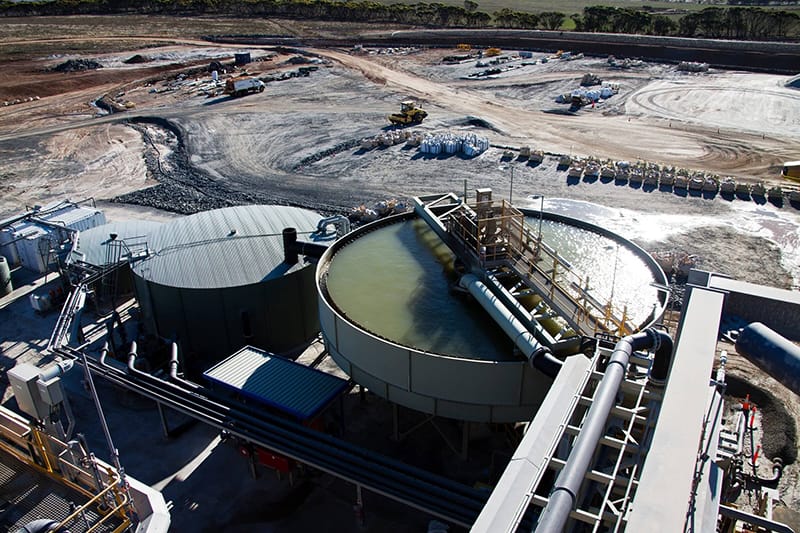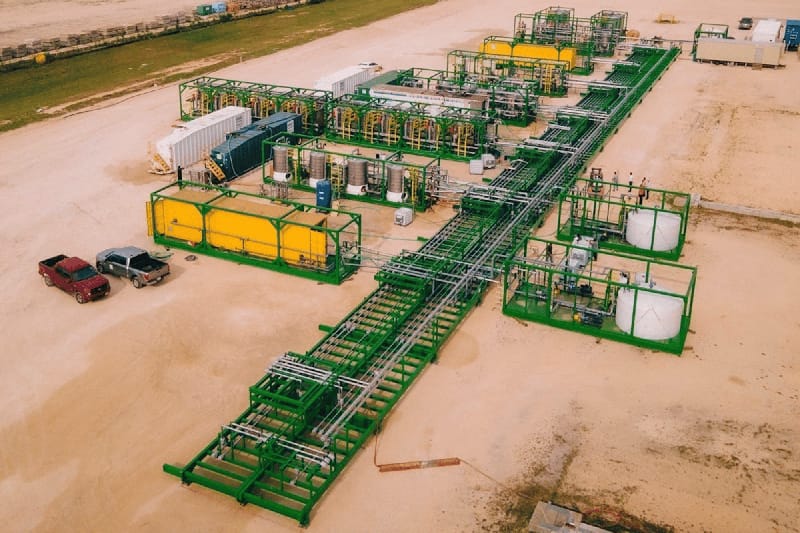The Environmental Advantages of IBAT’s DLE Technology
We are delivering on the promise of battery technology through cleaner lithium extraction.
Our direct lithium extraction (DLE) process recovers lithium from brine through selective absorption, before reinjecting the brine into the ground. It’s an efficient, validated, and proven method based on proprietary technology
But perhaps the most revolutionary aspect of IBAT DLE is how sustainable it is. As concern over the negative environmental impacts of lithium extraction grows, a sustainable solution is needed to protect the natural resources and habitats that may be affected by expanding lithium operations around the world.
Here’s why IBAT DLE is that solution and how it represents a leap forward over other extraction methods…
There’s Much Less Water Consumed

Water scarcity is a growing problem, in both the United States and the wider world. When lithium extraction operations are planned in a particular area, neighboring communities are often wary, and rightly so: solar evaporation, the most common lithium extraction method used in the past, consumes 180+ metric tons of water to produce 1 metric ton of lithium. In other words, roughly half a million gallons of water is lost through evaporation, and additional fresh water is spent separating the lithium from the other components in the brine.
Solar evaporation is not alone in excessive water usage. Ion exchange (IX), solvent extraction, and electromembrane processes all require fresh water for regeneration/elution from a sorbent phase, often in amounts even greater than evaporitic technology.
With IBAT’s process, up to 98% of the process water is recycled, meaning it can be used over and over again to extract lithium. And we are working to move the percentage even higher so that a minimal amount of water is consumed from any particular site.
IBAT Avoids the Use of Any Chemicals

Although solar evaporation may sound like a green technique, sunlight and wind are far from the only tools needed to extract lithium with the process. Concentrated brine left behind after the water evaporates must be treated with chemicals and fresh water to remove impurities before being converted into battery-grade lithium carbonate or lithium hydroxide. These chemicals are prone to leaking out of evaporation ponds and entering the water supply, potentially poisoning local wildlife.
Ion exchange also demands chemicals to function. The exchanger must be regenerated with expensive acids and bases to adjust the pH levels for optimal lithium recovery.
In contrast, IBAT’s extraction process does not require chemicals. Its mode of action is selective absorption of lithium, using steam created by liquid natural gas to heat the brine and a proprietary, crystal-like filter to remove impurities from fresh brine.
We Generate Minimal Waste Byproducts
From the large, hazardous salt piles created during solar evaporation, to the heavy amounts of waste salt water created during each acid/base regeneration cycle of ion exchange, traditional lithium extraction methods create harmful byproducts. Even with solvent extraction, brine can become contaminated by dissolved organic phase, necessitating treatment before it can be reinjected into the ground.
Our technology works without creating these toxic waste streams. The spent brine is clean enough to be recycled back into the salt flat, undisturbed apart from having the lithium removed. And nearly all the process water is recycled for reuse in the system.
-1.jpg?width=800&height=533&name=Salar%20Salt%20Stack%20(1)-1.jpg)
Our Modular System
Has a Small Footprint and Fast Time to Market

While other lithium extraction operations often involve massive permanent or semi-permanent facilities that take five to six years to complete, the IBAT Modular Direct Lithium Extraction (MDLE) plant is built for flexibility and speed. We can fabricate one of our systems in a fabrication yard and deploy it in the field in 12 to18 months. Combined with our plants’ low operating costs, you’re able to achieve profitability much faster than with other plants on the market.
What’s more, as the IBAT MDLE is a component-driven system, we can specially configure valves, pumps, and any other piece to customize the plant to your requirements based on your brine quality, impurities, lithium concentration, and flow rate. You can also incorporate solar power and other renewable energy components to improve your ESG performance.
Add to all this the fact that our extraction activities create no salt piles, when an IBAT MDLE plant is decommissioned, there’s little evidence that it was ever there.
IBAT's DLE Technology vs Other DLE Methods
From environmental impact to time to market, operating costs, and more, IBAT DLE rises above other direct lithium extraction methods. See how our proven technology compares to the competition.
Get Started Today
Reach out to us now to hear what IBAT DLE can do for you.

